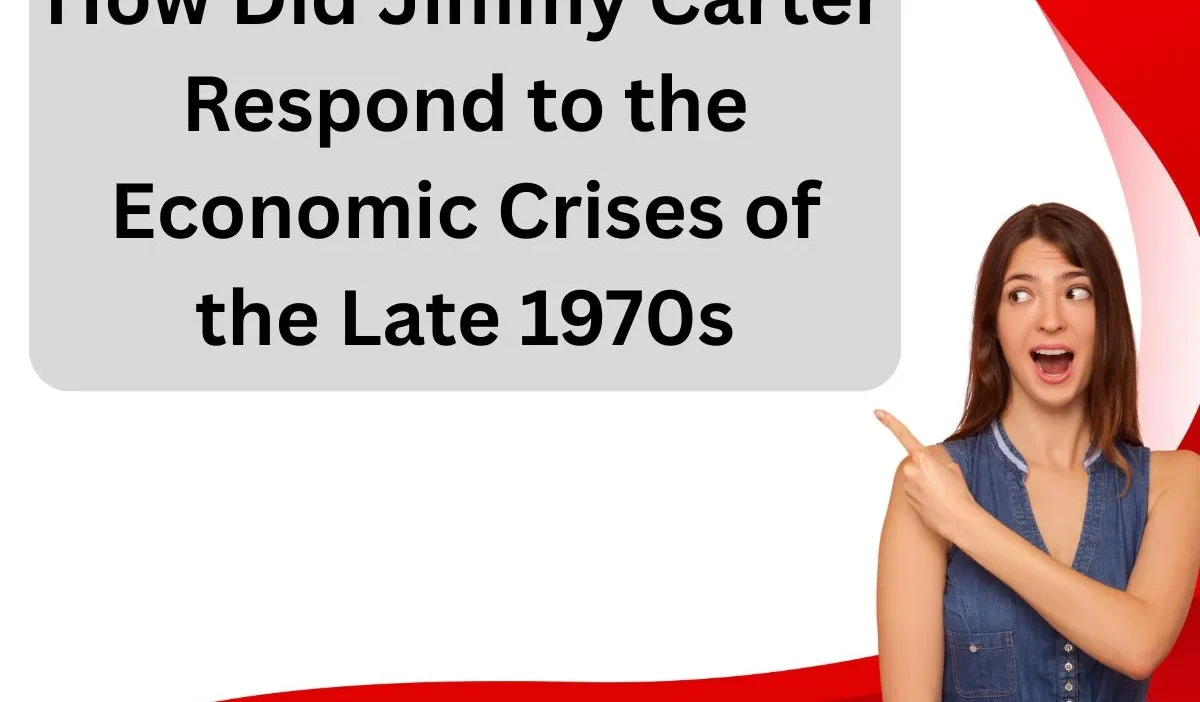When Jimmy Carter became the 39th President of the United States in 1977, he inherited a troubled economy plagued by rising inflation, unemployment, and a stagnant growth rate—a condition economists dubbed stagflation.
The economic crises of the late 1970s were among the most complex challenges of Carter’s presidency.
This article explores how he responded to these issues through monetary policies, regulatory reform, energy initiatives, and public messaging.
Understanding the Economic Crises of the Late 1970s
Before diving into Carter’s responses, it’s essential to understand the nature of the crises:
- Stagflation: An unusual economic condition where high inflation and high unemployment coexist.
- Energy Crisis: Oil embargoes in 1973 and 1979 by OPEC led to soaring gas prices, shortages, and fuel rationing.
- Weak Productivity: The economy was growing slowly, and real wages were stagnant.
- High Interest Rates: To control inflation, interest rates were pushed higher, increasing borrowing costs.
- Public Confidence: Many Americans lost faith in the government’s ability to manage the economy.
Carter’s Key Economic Responses
1. Anti-Inflation Measures and Interest Rate Policies
Though the Federal Reserve is technically independent, Carter supported the monetary tightening it undertook to curb inflation.
- Appointed Paul Volcker as Chairman of the Federal Reserve in 1979. Volcker raised interest rates aggressively to fight inflation, which peaked at 13.5% in 1980.
- Carter publicly supported Volcker’s tough monetary policies, even though they led to short-term economic pain.
- He imposed voluntary wage and price guidelines to curb inflation but they had limited impact due to lack of enforcement power.
2. Energy Policy: The “Moral Equivalent of War”
Carter believed that America’s overdependence on foreign oil was at the heart of the economic crisis. He made energy a central issue.
- Delivered his famous “Crisis of Confidence” speech in 1979, calling for energy conservation and national unity.
- Created the Department of Energy in 1977 to centralize energy policy.
- Signed the National Energy Act in 1978, which:
- Promoted fuel efficiency standards
- Expanded development of renewable energy
- Offered tax incentives for conservation
- Promoted fuel efficiency standards
- Encouraged Americans to lower their thermostats and reduce gasoline use, famously donning a sweater during a televised address.
3. Deregulation and Regulatory Reform
Carter aimed to stimulate growth and reduce government red tape, even as a Democrat.
- Deregulated airlines, trucking, and railroads to increase competition and lower prices for consumers.
- Supported reforms that would eventually lead to telecommunications deregulation.
- Signed the Airline Deregulation Act of 1978, which allowed more carriers to enter the market and reduced fares.
4. Fiscal Policy and Federal Spending
Carter initially focused on reducing the federal deficit rather than expanding government programs, going against many in his own party.
- Attempted to cut government spending, which drew criticism from both liberal Democrats and conservative Republicans.
- His 1977 stimulus package included public works and tax rebates to jump-start job creation.
- Later years saw greater budget tightening, contributing to political unpopularity.
5. Employment and Economic Stimulus
To tackle unemployment, Carter used a mix of targeted spending and tax incentives.
- Signed the Humphrey-Hawkins Full Employment Act in 1978, which set goals for full employment and price stability.
- Backed job training and public service employment programs.
- Attempted to balance the conflicting goals of stimulating job growth and controlling inflation.
Public Reaction and Long-Term Impact
Carter’s responses were met with mixed reviews.
- Many praised his long-term vision for energy independence.
- Critics viewed his speeches, especially the “Crisis of Confidence” address, as gloomy or even defeatist.
- Short-term pain from rising interest rates and unemployment eroded public support.
- His handling of the economy became a central issue in the 1980 presidential election, contributing to his loss to Ronald Reagan.
Conclusion
Jimmy Carter’s response to the economic crises of the late 1970s reflected a commitment to long-term solutions rather than quick fixes.
He promoted energy independence, fiscal discipline, and regulatory reform, and he supported difficult but necessary anti-inflationary measures.
While not all his policies had immediate success, many laid the groundwork for future recovery in the 1980s.
Carter’s legacy on the economy is one of moral leadership, long-range planning, and politically costly decisions that later proved to be economically sound.

